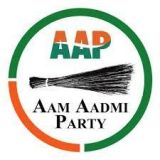Arvind Kejriwal is a bigger threat to India’s political system now that’s he’s resigned
Arvind Kejriwal is the Harry Potter of Indian politics. Perched on a magic broom—the election symbol of his Aam Aadmi Party (AAP)—he has catapulted himself as a boy wizard fighting against all odds in a shadowy world inhabited by demons and beasts. He has even conjured a supreme malevolent villain on the lines of Voldemort as a fountainhead of the Dark Arts reincarnated as corrupt politics. Donning the Potter mantle, Kejriwal has publicly denounced Mukesh Ambani, India’s biggest business magnate, who was so far the one Who-Must-Not-Be-Named despite persistent gossip about his growing clout in the corridors of power. Kejriwal’s assertion that the country’s two main political parties, the Indian National Congress and the Bharatiya Janata Party (BJP), are mere puppets of the evil lord (that would be Ambani) seeks to turn the upcoming contest in the national polls this summer into a battle between good and evil.
+
There is indeed a magical quality in the manner in which Kejriwal and his fledgling party has all of a sudden invaded India’s political space. This is unique even in a boisterous democracy which has seen a procession of new leaders and parties come and go over the decades. What makes the advent of AAP even more exceptional is its contrast with the established parties already entangled in convoluted caste, community and regional calculations or the more modern but still mundane mantra of development by the BJP strongman Narendra Modi. Instead Kejriwal offers a contemporary fairy tale in which sheer goodness of heart and the courage to combat evil are required to triumph over the forces of darkness.
+
However, behind the melodrama of the AAP’s rhetoric is a shrewd strategy to take maximum advantage of the current political disarray in India. After ruling for a decade, the Congress is collapsing at an alarming rate—blamed not just for sins of omission and commission over the past 10 years but also despised as a jaded, faded ancien régime that has failed to deliver while reigning for most of the time since the country’s independence. Its chief rival in the BJP appears to have gained most from the decline of the Congress, particularly after handing over its leadership to the larger-than-life Narendra Modi, backed by powerful corporates and the influential upper middle classes. Yet the extent of Modi’s victory and whether his personal charisma will be adequate to get BJP a workable majority in India’s Lower House of Parliament, Lok Sabha, still remains in doubt. For instance, the BJP’s prospects could be seriously dented in large states like Uttar Pradesh and Bihar where substantial number of voters are Muslims and remain antipathetic to Modi because of the anti-Muslim pogroms of 2002 in the state of Gujarat, which he has been ruling since 2001. There is also the danger of a gang-up against the BJP by an array of regional satraps across the country that would be disinclined to concede the throne in Delhi to a dominant leader like Modi. In this crowded electoral battlefield, Kejriwal and his band of political novices have deliberately sought to be unconventional to create their own political niche.
+
Three factors have guided the AAP strategy. The first relates to the growing resentment at being left out of the India shining story among a vast segment of the population cutting across caste, community and region and encompassing most people from white collar employees in the government or private sector downwards to the poor and unemployed. They feel that top politicians, bureaucrats, industrialists, and even journalists belong to a cozy club where an unholy nexus ensures that both money and power belong exclusively to a privileged elite. This view is particularly prevalent in metros and large cities where swanky luxury hotels, super specialty hospitals and exclusive boutique stores have mushroomed in stark contrast to the woefully inadequate housing, healthcare and transport for a majority of citizens living in the same urban areas.
+
The second factor relates to the growing and endemic nature of corruption in India, both in terms of the multi-million dollar mega scams that deplete India’s economy and the day-to-day bribery and extortion by government departments that more directly drain millions of citizens. The AAP spawned by the hugely popular anti-corruption movement launched three years ago and has steadfastly focused on ways and means to combat corruption, including sweeping legislation. Its leaders know that this is an issue that touches a chord across urban India, agitating every single ethnic and religious group.
+
Third, and perhaps the most important facet of the AAP strategy is to provide a political platform to the growing public anger toward elected politicians, seen as self-serving and dishonest. In an audacious move that appears to have stumped other political parties, Kejriwal has called for a change in Indian democracy itself. He wants to make it more participatory than representative through mohalla sabhas (local councils) that have the powers to decide what facilities and services people get in the localities they live. The AAP vision of a bottom-up democracy is persuasive in a country where elected representatives living in high security bungalows and traveling in red beacon cars are cocooned from the people who voted them in. Unlike other opposition parties who are clamoring for a regime change, the new party claims to offer an entirely alternative style of governance.
+
Much of Kejriwal’s proclamations about politics and democracy would have been dismissed as utopian dreams had it not been for his party’s spectacular performance in the local Delhi elections last December. The incredible political debut of his party, which won a near majority with limited organization or resources, and his daring move to become chief minister and form a government with outside support from the Congress has made the critics and skeptics wary of underestimating the maverick leader. His in-your-face political posturing and a flurry of populist measures while in government, which led to his dramatic resignation after 49 days in power, have no doubt lost him some of his earlier support from a section of the intelligentsia who fears him too unstable to govern. At the same time, the reduction of water and electricity charges, a sit-down strike outside Parliament to protest bad policing (that involved spending a cold winter night out on the road), and the registration of a police case against Ambani for fraud related to gas prices may well have endeared him to a wider constituency. Kejriwal’s resignation on the Janlokpal Bill—his centerpiece legislation to combat corruption—after it was jointly thwarted by the Congress and the BJP appears to have further boosted his popularity at least in Delhi, where opinion surveys show AAP well ahead in both local and parliamentary polls.
+
Having acquired a nationwide profile through virtually non-stop television coverage over the past three months, Kejriwal and the AAP today threaten both Rahul Gandhi’s Congress and Modi’s BJP. He could hasten the decline of the Congress as more and more people who do not want Modi as their leader prefer AAP to the discredited and rapidly fading ruling party as the one capable of posing a challenge to the BJP dynamo. He has already devastated the Congress in Delhi and could do well so in other metros like Mumbai and Bangalore. This may not lead to substantial gains for the AAP in the 2014 parliamentary polls. But Kejriwal would be in business even if his party manages to get a dozen seats in Parliament and could return to power with a full majority when the Delhi elections are held again.
+
Yet the real import of AAP and its enigmatic leader in the short term lies in the impact they can have on the Modi juggernaut that had hoped to steamroller its way to power in the 2014 elections. So far Modi’s only national challenger, Gandhi, appears to be no match to him. Kejriwal could put up a far tougher fight. Although he may not be in a position to win, he could seriously puncture the BJP’s claim to bring about real change by pointing out that the party and the Congress are two sides of the same coin. Even if he does manage to convince only a section of the urban youth, who the BJP is targeting as its core constituency, it could make a vital obstacle to the BJP winning the over 200 parliamentary seats that are essential if it wants to stake a claim for the Delhi throne. The difference between Kejriwal and Modi in the coming elections is that while the former has a lot to gain, the latter has everything to lose. more











